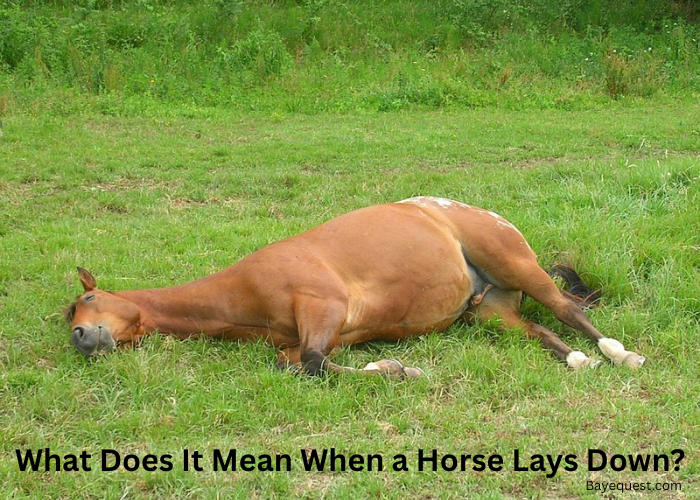Deep in Arizona’s Tonto National Forest lives a wild herd like no other. The Salt River wild horses aren’t fenced, tagged, or tamed, and they like it that way.
You’ll find them along the riverbanks, cooling off in the shallows or thundering through the desert with dust in their wake.
Their fight to stay free hasn’t been quiet. Courtrooms, protests, and policy fights have all shaped their story.
Yet they’re still here, wild, proud, and rooted in the land. Want to witness them yourself? Let’s explore the horses, the river, and the spirit that won’t back down.
Who are the Salt River Wild Horses?
The Salt River Wild Horses are a herd of free-roaming horses that live along the Salt River in Arizona’s Tonto National Forest.
They are not owned, managed, or bred by any private ranch or government agency. Their exact origin is debated.
Some believe they descended from Spanish horses brought to the Americas in the 1600s, while others think settlers left them behind, ranchers, or the U.S. Cavalry in the 1800s.
Despite their mysterious past, they’ve become a powerful symbol of wild beauty and freedom in the Southwest. Today, they are protected under Arizona law and carefully monitored by conservation groups.
History and Origin of Salt River Wild Horses
The true origin of the Salt River Wild Horses is still debated, and that’s part of what makes them so fascinating.
Some historians believe they are descendants of Spanish horses brought to North America in the 1600s during early expeditions. These horses were likely released or escaped into the wild, where they adapted to life in the harsh Sonoran Desert.
Others argue the horses came later, possibly in the 1800s. Settlers, ranchers, and even the U.S. Cavalry often used horses in this region.
Over time, some were abandoned or strayed from ranches, eventually forming wild herds.
By the early 1900s, horses had already become well established along the Salt River.
A 1902 article from the Arizona Republic mentioned wild horses running free in the area, proving they’ve been there for more than a century.
While they may not be “mustangs” in the strictest sense, the Salt River herd has lived wild and free for generations.
Today, their presence is a living connection to Arizona’s frontier past and a source of ongoing controversy and conservation.
Where to See Salt River Wild Horses
If you’re hoping to catch a glimpse of the famous Salt River wild horses, your best bet is the Lower Salt River in Arizona’s Tonto National Forest.
This stretch of desert river is home to several well-known viewing spots where these horses are often seen grazing, drinking, or cooling off in the water.
Here are the top places to look:
Coon Bluff Recreation Area – One of the most reliable spots. Early mornings and evenings offer the best chance to see horses near the water.
Granite Reef Recreation Area – Located on the western end of the river, this peaceful spot frequently attracts horse sightings.
Phon D Sutton – Great for kayakers and hikers. Horses often appear at the river’s edge, especially in warmer weather.
Pebble Beach – A favorite for photographers. The wide-open views make it easier to spot herds from a distance.
Butcher Jones Beach – Located near Saguaro Lake, this family-friendly spot offers frequent sightings.
Goldfield Recreation Area – Less crowded and great for those who don’t mind a bit of hiking.
To improve your chances, visit early in the morning or just before sunset, when the horses are most active. And don’t forget: a Tonto Daily Pass is required for parking in most of these areas.
Be respectful, stay quiet, and refrain from feeding the horses. Watching them in their natural habitat is a rare privilege, one that is worth protecting.
The Fight to Protect Salt River Wild Horses
In 2015, the future of the Salt River wild horses was suddenly at risk. The U.S. Forest Service announced a plan to round up and remove the horses, referring to them as “unauthorized livestock.”
That announcement caused an uproar. Thousands of people, locals, tourists, and horse lovers, spoke out against the decision.
Protests were held. News stories spread. And one group, the Salt River Wild Horse Management Group (SRWHMG), stepped up to lead the fight.
This nonprofit organization worked nonstop to prove the horses had lived along the Salt River for generations. Historical records indicate the presence of wild horses in the area dating back to the 1800s.
Because of public pressure and community support, Arizona passed the Salt River Horse Act in 2016. This law provided the horses with legal protection and made it illegal to harass, harm, or remove them without obtaining special permission.
It also enabled SRWHMG to partner with the state and help manage the herd humanely.
Today, the horses are protected, but the fight isn’t over. Some groups still argue for their removal due to environmental concerns.
However, thanks to strong advocacy and new laws, these wild horses continue to roam free.
How Do Salt River Wild Horses Survive in the Wild?
The Salt River wild horses have learned to survive in one of the toughest environments in Arizona, the Sonoran Desert.
Their lifeline is the Salt River itself. It provides fresh water year-round, which they use not only for drinking but also to cool off during the hottest months.
You’ll often see them standing in the shallow water, especially during summer, using the river as natural relief from the heat.
Food isn’t always easy to find in the desert, but these horses have adapted. They graze on native grasses, shrubs, and whatever plant life is available along the riverbanks.
Their bodies are built to handle rough forage, and they can travel long distances to find what they need.
They also survive thanks to their strong herd structure. Each herd is led by a stallion and guided by an experienced mare.
This social system helps protect young foals, maintain order, and ensure the group sticks together while navigating the land.
They also rely on each other to find safe paths to water and food, and to warn of nearby threats.
Over time, these horses have developed behaviors that help them manage extreme conditions. They rest during the hottest part of the day and are more active during the morning and evening.
Despite living near hiking trails, campgrounds, and roads, they stay wild and self-sufficient, rarely depending on humans for survival.
Thanks to instinct, adaptation, and the natural resources of the river, the Salt River wild horses continue to thrive in an environment that challenges even the toughest creatures.
Conservation Challenges Facing Salt River Wild Horses
Although the Salt River wild horses are protected, they still face numerous challenges that threaten their way of life.
1. Water and food shortages
One of the most significant problems is water scarcity. These horses depend on the Salt River to survive.
However, water levels sometimes drop due to changes at the Stewart Mountain Dam. When that happens, eelgrass, a key food source in the river, disappears.
Without it, the horses struggle to find enough to eat, especially in hot, dry months.
2. Environmental impact
Some environmental groups worry that the horses are damaging the river’s ecosystem. They say the horses eat too many native plants, which affects other wildlife.
Birds like the yellow-billed cuckoo and the Southwestern willow flycatcher rely on these plants to build nests.
As a result, lawsuits have been filed, requesting that the government remove some horses from the area.
3. Population control
If the herd gets too big, the land can’t support them. Overgrazing becomes a serious risk.
To avoid this, the Salt River Wild Horse Management Group uses humane population control. They use a safe birth control vaccine to help manage the number of foals born each year.
4. Human interaction
Another growing challenge is people. Visitors often try to feed or approach the horses.
This might seem kind, but it teaches the horses to come too close to humans. That can lead to accidents or make the animals aggressive.
It also puts their health at risk, since human food is not safe for them.
Why Salt River Wild Horses Matter
The Salt River wild horses are a vital part of Arizona’s natural and cultural heritage. They have lived along the Salt River for over a hundred years, surviving in the desert without human help.
Some believe they came from Spanish horses brought to the area long ago. Others think early settlers or the U.S. Cavalry left them behind.
No matter their origin, they’ve become a symbol of freedom and strength.
These horses also bring value to the local community. Tourists visit the Tonto National Forest hoping to see them in the wild.
This helps support nearby businesses and brings attention to Arizona’s beautiful landscapes.
They also help educate people about the importance of protecting wild animals and their habitats. The story of the Salt River horses shows how public support can save wildlife from being removed or harmed.
Above all, they matter because they are wild, free, and part of the land. Losing them would mean losing a living piece of the West. Protecting them helps us protect a sense of wonder, history, and the connection between nature and people.
That’s why the Salt River wild horses should always have a place to roam.
How to Support Salt River Wild Horse Preservation
You don’t need to live near the Salt River to help protect its wild horses. There are simple and meaningful ways anyone can support their preservation.
1. Follow the rules when visiting.
If you’re lucky enough to see the horses in person, always keep a safe distance. Don’t feed or try to touch them.
Human food can make them sick, and close contact can change their natural behavior. Respecting their space is one of the best ways to keep them wild.
2. Spread awareness.
Share the story of the horses with others. Share photos, articles, or videos on social media.
The more people know about the Salt River horses, the more support they’ll have.
3. Support local organizations.
Groups like the Salt River Wild Horse Management Group work daily to protect the herd. They rely on donations and volunteers.
Even a small gift can help with medical care, provide food during dry seasons, or support humane population control.
4. Get involved.
If you live nearby, consider volunteering. You can help with cleanups, education, or monitoring the horses.
Arizona Salt River Wild Horses: FAQs
What do wild horses eat?
Wild horses eat grasses, shrubs, and other native plants they find in their environment. They graze throughout the day, selecting a variety of plants to obtain the necessary nutrients. In desert areas like the Salt River region, they rely on whatever seasonal vegetation is available, including river plants like eelgrass.
How do wild horses trim their hooves?
Wild horses trim their hooves naturally by moving across rough, rocky terrain every day. This constant movement wears their hooves down to a healthy length and shape. They don’t need human help because walking and grazing in the wild are sufficient. If a wild horse stops moving due to injury or illness, its hooves can overgrow, but in natural settings, this is uncommon.
Salt River Wild Horses: Conclusion
The Salt River wild horses are part of Arizona’s story. They’ve survived in the wild for generations, facing heat, drought, and even the threat of removal.
Thanks to strong public support, they still roam free today. But their future isn’t guaranteed. They need protection, respect, and people who care.
Whether you visit in person or support from afar, your actions matter. These horses remind us what true freedom looks like.
Let’s ensure they remain wild for generations to come. Their story deserves to continue.








